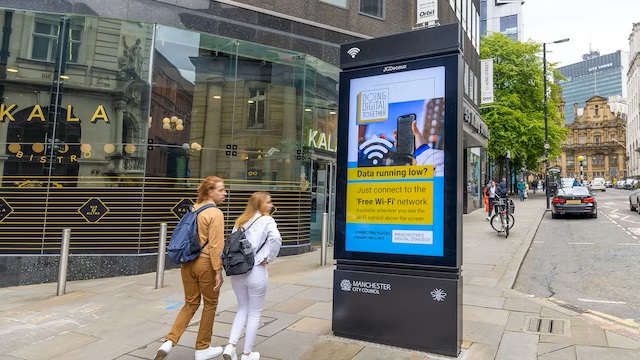Despite growing consumer demand for sustainability, marketers often overlook it when selecting media channels, says Chris Dooley of JCDecaux. But out-of-home (OOH), particularly digital OOH (DOOH), offers an effective and sustainable advertising medium while benefiting communities.
Kinetic research shows 71% of consumers think brands can drive positive change. And over 80% of companies plan to increase sustainability investments. But sustainability ranks low for marketers in channel selection.
This may be due to limited awareness of OOH’s sustainability merits. OOH accounts for under 0.04% of UK energy usage with green energy powering many sites. Major OOH owners like JCDecaux and ClearChannel have sustainability initiatives and are Ad Net Zero members.
Unique Community Investment
But OOH also uniquely gives back – PwC estimates 40-50% of spend goes to communities. OOH media owners fund services like bus shelters, free WiFi, and defibrillators without burdening taxpayers. This high community ROI distinguishes OOH sustainability.
Powerful Medium for Brand Messaging
Research shows a strong link between OOH advertising and driving brand trust and consideration. The public canvas enables brands to credibly commit to sustainability. Kinetic found the strongest agreement for trusting public sustainability messaging among young urban audiences – aligning with DOOH.

DOOH Boosts Targeting and Measurement
DOOH provides enhanced flexibility, targeting and analytics versus static OOH. With programmatic DOOH, brands access audience data to optimize plans and measure campaign results. This empowers better performance and stewardship of spend.
For purpose-driven brands like WUKA seeking high reach and ROI with lower environmental impact, OOH and especially DOOH offer advantages traditional channels lack – enabling brands to match sustainable messaging with sustainable media.
